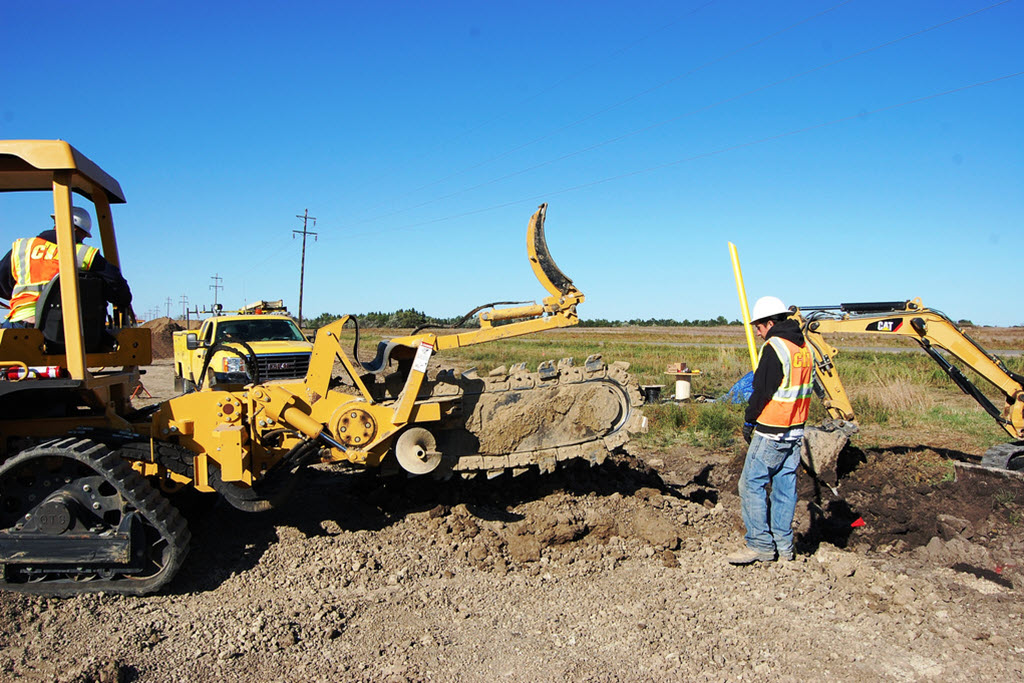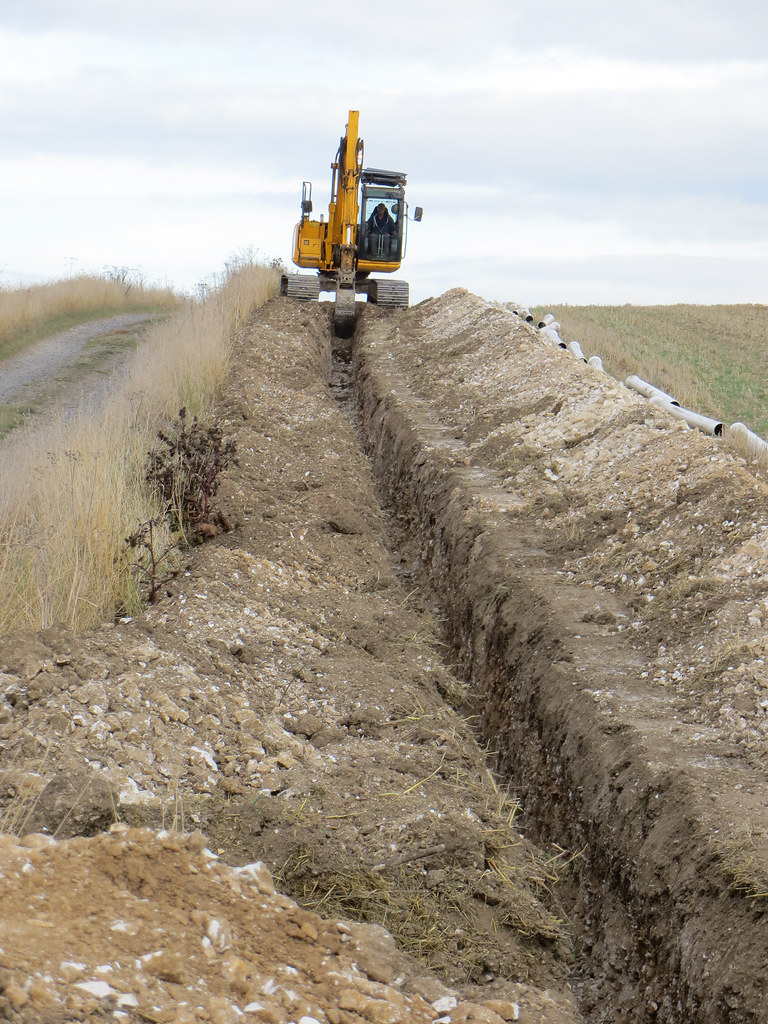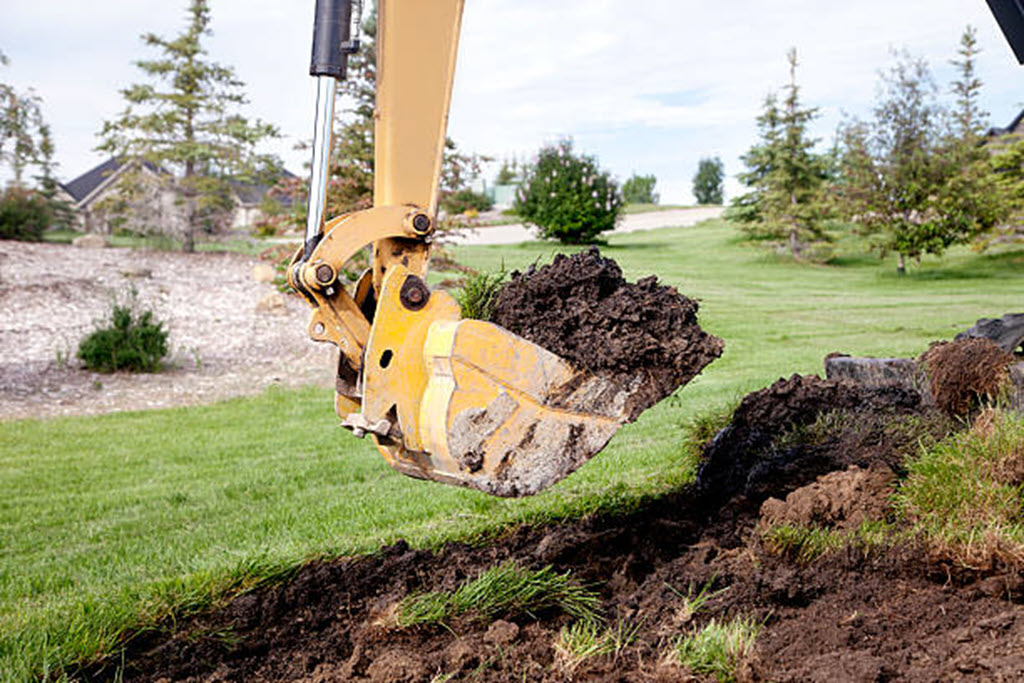Cable Trenchingsin Imlay City MI
Cable Trenching Done Right for Secure Utility Installations
We Are Locally Owned & Operated For Over 37 Years
Contact Us Today!
We Serve Businesses In And Around The Following Cities:
About Cable Trenchings
Cable Trenching – A Detailed Guide for Commercial Properties in Imlay City
As the city of Imlay readies itself for advancements in infrastructure, communication technology, and urban development, cable trenching becomes increasingly important. A crucial process involved in setting up major utilities in the city, cable trenching deeply impacts commercial properties, optimally positioning them for success. Providing essential services like telecommunications, water, gas, and electricity, this complex process requires professional trenching contractors to execute.
Trenching companies near Imlay City, such as D&J contracting, are vital to this process. With diverse implications across numerous industries, the depth of cable trenching in commercial properties results in significant benefits, which we will unpack in this comprehensive guide.
Demystifying The Cable Trenching Process
Trenching involves excavating lengthy, narrow trenches in the ground to lay various utility lines. From installing a trench for a propane line to setting up complex telecommunications networks, the process requires specialized machinery and technical skills.
An experienced trenching contractor begins by doing a detailed survey of the area to identify and avoid potential underground hazards. Following this is the formulation of a work strategy and then the trench digging. After the required utility lines are laid, the trench is backfilled and compacted to its original state to ensure the surrounding area’s integrity.
One of the key specialties trenching companies provide is trenching for utilities. These professionals utilize various trenching methods, like the cut-and-cover, micro-trenching, or directional boring, depending on the type and scale of the project.
The Significance Of Cable Trenching For Commercial Properties
While the need for trench digging services near Imlay city might not be instantly obvious, the benefits for commercial properties are substantial. Firstly, business operations often need a steady supply of utilities to function effectively. By dealing with a competent trenching excavation company, commercial properties can rely on well-established utility lines, which reduce the chances of interruptions due to malfunctions.
Take, for instance, D&J Contracting, an experienced trenching and boring contractor in Imlay City. With a keen understanding of the different requirements for trenching in various properties, they have added significant value to multiple establishments across town.
Another considerable benefit of cable trenching for commercial properties is the crucial role it plays in the telecommunications infrastructure. High-speed internet has become a business necessity in our digital age, and laying the groundwork for robust data transmission requires the skills of an expert trench digger contractor.
For instance, in a bid to upgrade their operations, a local business in Imlay City could balance cost, efficiency, and future tech needs by engaging a trench digging contractor. This straightforward strategy can pay real dividends by facilitating faster, more stable internet connections, thereby improving overall productivity.
Choosing the Right Trenching Contractor in Imlay City
Securing the right trench digging service near Imlay City is paramount for commercial property owners aiming to reap the full benefits of trenching. For instance, a reputable trenching excavation company like D&J Contracting not only offers comprehensive services, but they also provide years of expertise and a commitment to delivering top-quality work that stands the test of time.
The versatility of trenching contractors ensures they cater to a variety of needs, including trenching for utilities and laying trenches for propane lines. No matter the scale of the project, they provide solutions that blend seamlessly with the city’s infrastructure.
To sum it up, investing in professional trenching services in Imlay City yields considerable benefits for commercial property owners. With a process as intricate as cable trenching, the value of professional expertise cannot be overstated.
If you own a commercial property and plan to upgrade or install new utility lines, consider engaging with a trustworthy trenching contractor like D&J Contracting. Their wealth of experience, coupled with a clear understanding of the local terrain and construction regulations, makes them a prime choice for both small and large-scale projects in the city.
Cable Trenchings Gallery


Call Us Today to receive your Free Quote for
Cable Trenching in Imlay City
Serving: Imlay City, Michigan

About Imlay City, Michigan
In 1836, Connecticut businessman William H. Imlay began purchases areas of the forest here, and when the township was organized in 1850, it was named after him. In 1870, the Port Huron & Lake Michigan Railroad began building rail lines through the area, and chief engineer Charles Palmer purchased land in order to build a market and hotel. A post office began operating here on December 12, 1870 with Edward Palmer serving as the first postmaster. The community grew quickly to include 15 stores, a grain elevator, and several mills. In 1871, the community incorporated as a village named Imlay City.
In 1914, the city started building streetcar lines—a form of public transportation that was usually reserved for large cities. In April 1970, Imlay City celebrated its 100th birthday, and the residents voted to change Imlay City from a village to a home rule city by a two to one margin. The construction of Interstate 69 in the 1980s connected Imlay City with Flint, Port Huron, and Canada, leading to significant economic growth to serve the interstate travelers.
- According to the United States Census Bureau, the city has a total area of 2.37 square miles (6.14 km), all land.
- It is considered to be part of the Thumb of Michigan
- Imlay City intersects two major Michigan highways, Interstate 69 and M-53 (also known as Van Dyke Rd).
| Census | Pop. | Note | %± |
|---|---|---|---|
| 1880 | 971 | — | |
| 1890 | 1,251 | 28.8% | |
| 1900 | 1,122 | −10.3% | |
| 1910 | 1,174 | 4.6% | |
| 1920 | 1,211 | 3.2% | |
| 1930 | 1,495 | 23.5% | |
| 1940 | 1,446 | −3.3% | |
| 1950 | 1,654 | 14.4% | |
| 1960 | 1,968 | 19.0% | |
| 1970 | 1,980 | 0.6% | |
| 1980 | 2,495 | 26.0% | |
| 1990 | 2,921 | 17.1% | |
| 2000 | 3,869 | 32.5% | |
| 2010 | 3,597 | −7.0% | |
| 2020 | 3,703 | 2.9% | |
| U.S. Decennial Census | |||
As of the census of 2010, there were 3,597 people, 1,356 households, and 841 families living in the city. The population density was 1,517.7 inhabitants per square mile (586.0/km). There were 1,600 housing units at an average density of 675.1 per square mile (260.7/km). The racial makeup of the city was 82.9% White, 0.9% African American, 0.3% Native American, 0.6% Asian, 12.1% from other races, and 3.2% from two or more races. Hispanic or Latino of any race were 29.0% of the population.
There were 1,356 households, of which 37.9% had children under the age of 18 living with them, 42.8% were married couples living together, 13.5% had a female householder with no husband present, 5.7% had a male householder with no wife present, and 38.0% were non-families. 31.9% of all households were made up of individuals, and 15.5% had someone living alone who was 65 years of age or older. The average household size was 2.64 and the average family size was 3.43.
The median age in the city was 33 years. 30.2% of residents were under the age of 18; 9.2% were between the ages of 18 and 24; 26% were from 25 to 44; 21.7% were from 45 to 64; and 12.8% were 65 years of age or older. The gender makeup of the city was 47.4% male and 52.6% female.
As of the census of 2000, there were 3,869 people, 1,496 households, and 936 families living in the city. The population density was 1,690.4 inhabitants per square mile (652.7/km). There were 1,599 housing units at an average density of 698.6 per square mile (269.7/km). The racial makeup of the city was 88.65% White, 0.57% African American, 0.28% Native American, 1.32% Asian, 7.78% from other races, and 1.40% from two or more races. Hispanic or Latino of any race were 19.20% of the population.
There were 1,496 households, out of which 34.1% had children under the age of 18 living with them, 45.5% were married couples living together, 13.0% had a female householder with no husband present, and 37.4% were non-families. 33.2% of all households were made up of individuals, and 17.5% had someone living alone who was 65 years of age or older. The average household size was 2.53 and the average family size was 3.26.
In the city, the population was spread out, with 28.3% under the age of 18, 11.1% from 18 to 24, 28.5% from 25 to 44, 16.9% from 45 to 64, and 15.3% who were 65 years of age or older. The median age was 32 years. For every 100 females, there were 87.5 males. For every 100 females age 18 and over, there were 83.4 males.
The median income for a household in the city was $32,436, and the median income for a family was $43,267. Males had a median income of $36,066 versus $22,396 for females. The per capita income for the city was $16,021. About 6.4% of families and 8.1% of the population were below the poverty line, including 6.0% of those under age 18 and 12.7% of those age 65 or over.
Imlay City has five public schools, which are all part of Imlay City Community Schools, and one private school. The public schools include Weston Elementary for Kindergarten through 2nd grade, Borland Elementary for 3rd through 5th grade, Imlay City Middle School for 6th grade through 8th grade, and Imlay City High School for 9th through 12th grade. There is also Venture High School, an alternative school for students who do not succeed at the traditional high school. The private school in Imlay City is the Imlay City Christian School, which is a non-denominational, private Christian school located just outside town; it was established in 1952 by parents of the local area.
The Ruth Hughes Memorial District Library was first opened on January 27, 1990. It was constructed on the funds Ruth E. Hughes left for the Township Library through her will upon her death in March 1985. The library is governed by a seven-member board of trustees, with representation from Imlay City, Imlay Township and Attica Township.
The Imlay City Historical Museum was established in 1978 and is run by a private, non-profit organization. While its historical records primarily showcase Imlay City, Imlay Township, Attica Township, Arcadia Township, Goodland Township and the surrounding areas, it also has had such items as a World War I handgun exhibit. In front of its building is an historical caboose that was decommissioned some time ago. The building was a train station for the Grand Trunk Western Railroad, until the Imlay City Historical Commission wanted to lease the building from Grand Trunk Western after they decided to bulldoze it in 1971. Grand Trunk Western decided to lease the land to Imlay City, and from Imlay City, the Historical Commission leased the building for a museum. Work was started on restoring the building, and in 1978 it was completed. The open house ceremony and dedication was held on November 9, 1979.
Call Us Today to receive your Free Quote for
Cable Trenching in Imlay City
Related Services in Imlay City, Michigan
We Serve Businesses In The Following Zip Codes:
48007, 48015, 48021, 48026, 48035, 48036, 48038, 48042, 48043, 48044, 48045, 48046, 48047, 48048, 48050, 48051, 48066, 48071, 48080, 48081, 48082, 48083, 48084, 48085, 48088, 48089, 48090, 48091, 48092, 48093, 48098, 48099, 48225, 48230, 48236, 48310, 48311, 48312, 48313, 48314, 48315, 48316, 48317, 48318, 48397